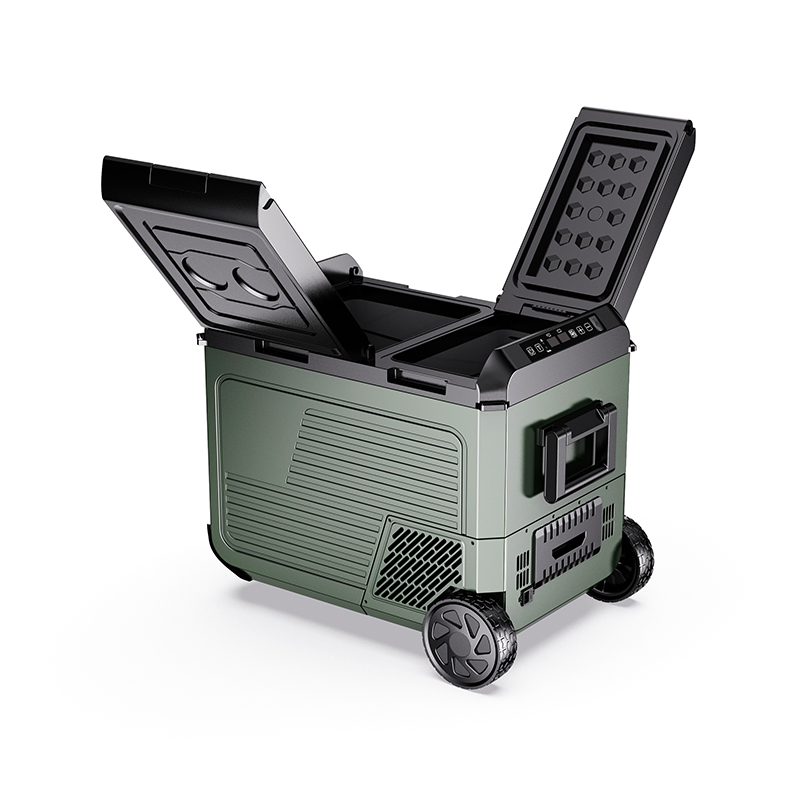Portable refrigerators are practical devices that provide convenient cooling for food, beverages, and medical supplies in various environments. They are widely used during camping trips, road trips, outdoor events, and in vehicles. These compact refrigeration units offer flexibility, energy efficiency, and ease of transport, making them a popular choice for individuals and families who need reliable cooling away from home.

Portable refrigerators are important because they allow users to maintain the freshness of perishable items in situations where traditional refrigeration is not available. Unlike coolers or ice chests, portable refrigerators provide consistent and adjustable temperature control, preventing spoilage and preserving quality. They are especially valuable for outdoor activities, long journeys, or professional use, such as transporting medical supplies, as they combine mobility with effective cooling.
Key Features of Portable Refrigerators
Several characteristics define the performance and suitability of portable refrigerators:
1. Cooling Technology
Portable refrigerators use different cooling methods, including thermoelectric, compressor, and absorption systems. Thermoelectric units are lightweight and quiet, suitable for mild cooling needs. Compressor refrigerators provide efficient cooling even in high-temperature conditions and can maintain low temperatures for extended periods. Absorption models are ideal for quiet operation and can work on multiple power sources, including gas and electricity.
2. Temperature Range
The ability to maintain a specific temperature range is essential. Some portable refrigerators offer adjustable thermostats, allowing users to set precise cooling or freezing conditions. Wide temperature ranges are beneficial for storing various items, from drinks to frozen foods or sensitive medical supplies.
3. Power Source
Portable refrigerators can operate on multiple power sources, including AC (household electricity), DC (vehicle power), and solar energy. Units with dual or triple power options provide flexibility for travel, camping, and off-grid use. Efficient power management ensures longer operation on limited energy sources.
4. Capacity and Size
Portable refrigerators come in various capacities, typically measured in liters. Smaller models are ideal for personal use or short trips, while larger units can accommodate more food and beverages for families or groups. The size and capacity should match the user’s needs while maintaining portability.
5. Portability and Design
The portability of a refrigerator is influenced by weight, handles, wheels, and compact design. Lightweight units with ergonomic handles or integrated wheels are easier to transport. Some models are designed to fit in car trunks or RV compartments, optimizing space and convenience.
6. Energy Efficiency
Energy-efficient portable refrigerators consume less power while maintaining consistent cooling performance. Features such as well-insulated walls, LED displays, low-power modes, and programmable settings contribute to reduced energy consumption and extended battery or vehicle power usage.
7. Additional Features
Many portable refrigerators include convenient features for enhanced usability, such as:
Digital temperature displays for easy monitoring
Internal lighting for visibility in low-light conditions
Removable shelves and compartments for flexible storage
Locking lids or secure closures for transport stability
USB ports or charging capabilities for auxiliary devices
How to Choose a Portable Refrigerator
Selecting the right portable refrigerator involves considering usage scenarios, capacity, and performance requirements:
Determine Usage Needs: Identify whether the refrigerator will be used for camping, vehicle trips, medical transport, or general outdoor activities.
Assess Cooling Requirements: Choose a unit with the appropriate cooling method and temperature range for your items.
Check Power Compatibility: Ensure the refrigerator supports available power sources, including AC, DC, or solar options.
Evaluate Size and Capacity: Match the refrigerator’s storage capacity to the quantity and type of items you plan to store.
Consider Portability: Look for features such as lightweight construction, handles, or wheels for easy transport.
Review Energy Efficiency: Opt for energy-efficient models to prolong operation and reduce energy costs.
Examine Additional Features: Digital displays, adjustable compartments, and secure lids enhance convenience and usability.